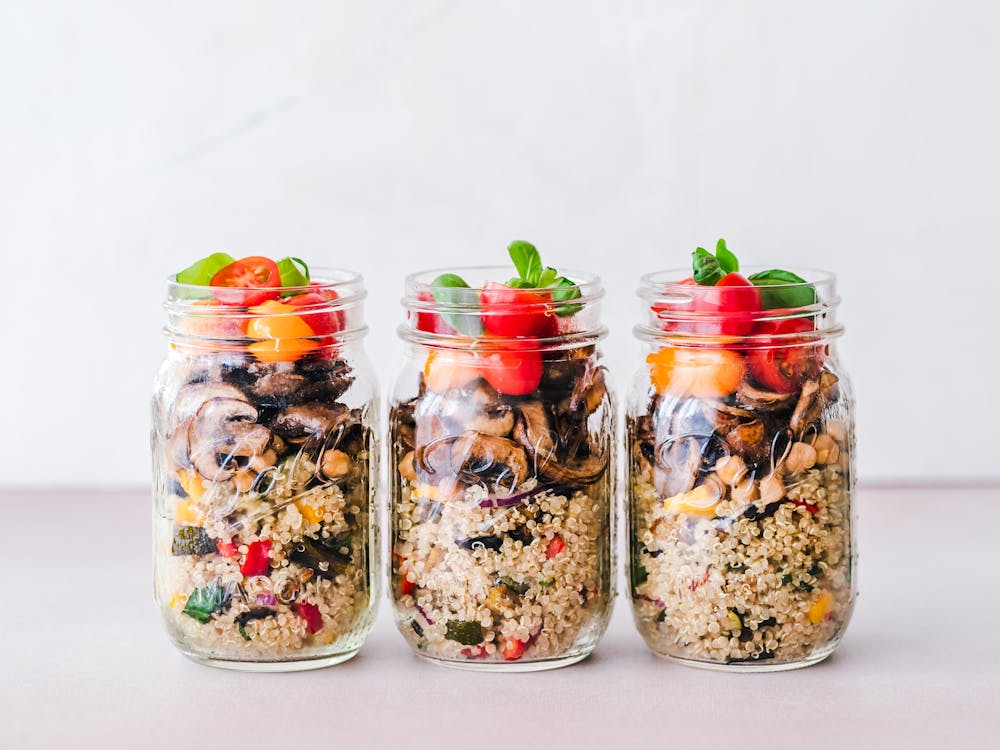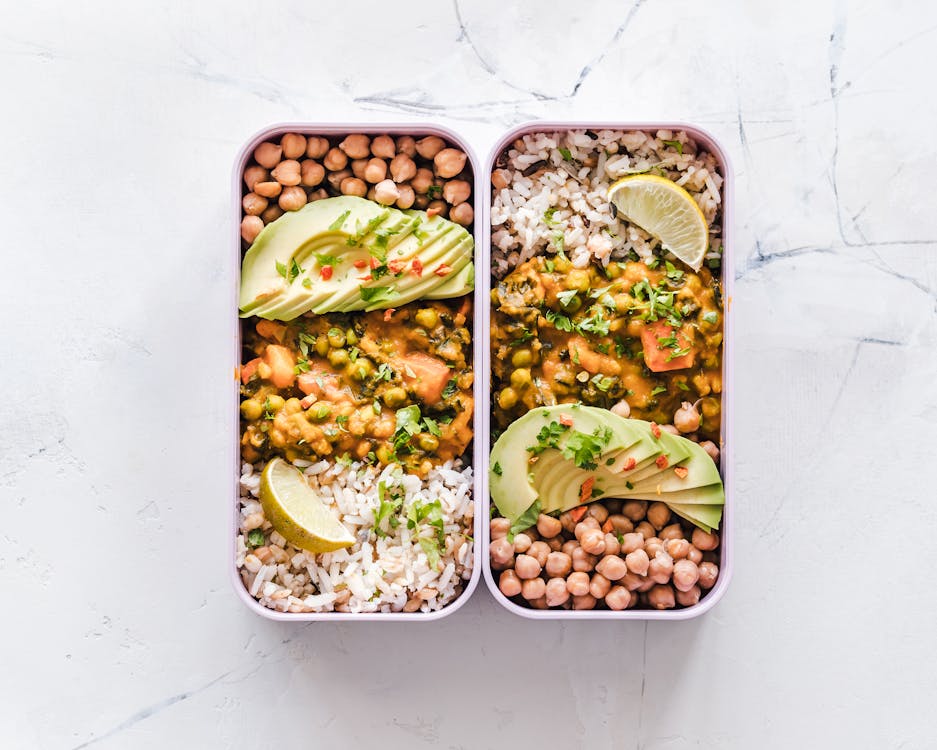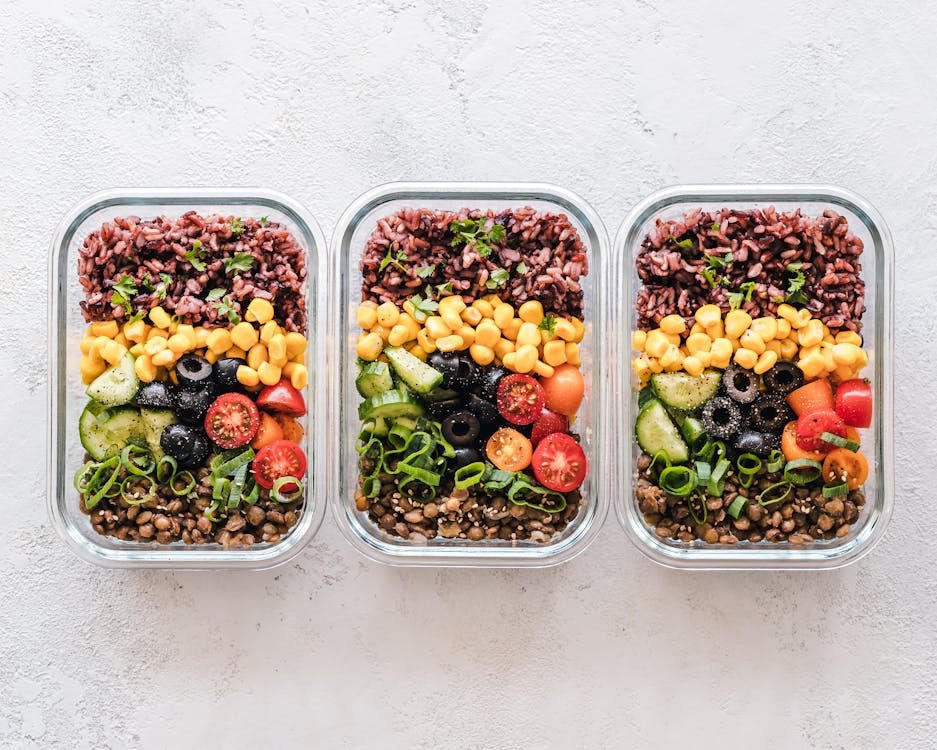Eating healthy should not feel like a challenge, but for people with limited mobility, meal preparation can be exhausting. Standing for long periods, chopping ingredients, or reaching into deep cabinets can make cooking feel overwhelming. As a result, many people turn to processed foods or takeout, which can be expensive and less nutritious.
Meal prepping offers a simple solution. By planning and preparing food in advance, healthy eating becomes easier and more convenient. With the right approach, meals can be made with minimal effort, reducing the need for daily cooking while ensuring access to balanced, nourishing food.

Setting Up Your Kitchen for Easy Meal Prep
Before starting meal prep, having a kitchen that supports easy movement and efficiency is essential. A well-organized space reduces strain, saves time, and makes cooking less stressful.
Small adjustments can make a big difference, allowing you to prepare meals comfortably without unnecessary effort.
Optimizing Your Kitchen Layout
The way your kitchen is arranged can either make meal prep easier or add to the challenge. Keeping essential items within easy reach prevents excessive bending, stretching, or walking back and forth.
Everyday tools like knives, cutting boards, and mixing bowls should be placed at waist level, where they can be easily accessed without strain.
If standing for long periods is difficult, using a sturdy chair or stool can provide support. Some people find it helpful to use a rolling cart to keep frequently used items close by, reducing unnecessary movement around the kitchen.
Adjusting counter heights or using a low table for meal prep can also improve comfort and reduce fatigue.
Choosing Adaptive Kitchen Tools
The right tools can make cooking more manageable, even with limited mobility. Lightweight knives with ergonomic handles reduce wrist strain, while electric can openers eliminate the need for twisting.
Using a food processor instead of chopping by hand can save time and effort, making meal prep faster and easier.
Slow cookers and pressure cookers are excellent options for hands-free cooking. Ingredients can be added at once, and the meal will cook without needing constant attention.
Automatic stirrers and electric peelers also simplify tasks that require repetitive motions, helping to reduce strain on joints and muscles.
For those with difficulty gripping small objects, silicone jar openers, wide-handled utensils, and one-handed cutting boards with food grips provide extra support.
These tools make handling ingredients easier, reducing the frustration that often comes with traditional kitchen gadgets.
Keeping Ingredients and Supplies Accessible
Rearranging food storage can prevent unnecessary reaching and bending. Placing frequently used items at eye level ensures they are easy to grab, while pull-out shelves or clear storage bins keep everything visible and within reach.
Keeping staple ingredients, such as rice, pasta, and spices, in easy-to-open containers simplifies cooking and reduces spills.
For refrigerated items, placing ready-to-eat ingredients, like pre-chopped vegetables or yogurt, in front helps ensure they are easily accessible.
If lifting heavy pots and pans is difficult, using lighter alternatives, such as ceramic or aluminum cookware, can make meal prep easier.

Planning Meals for Simplicity and Nutrition
Meal prepping starts with a solid plan. Knowing what to cook in advance reduces stress, saves energy, and makes grocery shopping easier.
For people with limited mobility, meal planning should focus on simple, nutritious dishes that require minimal effort.
A well-thought-out plan helps avoid last-minute cooking struggles and ensures healthy meals are always within reach.
Creating a Realistic Meal Plan
The key to successful meal prep is choosing meals that match your energy levels and mobility needs. If chopping ingredients is tiring, selecting recipes that require fewer steps can help.
If standing for long periods is challenging, focusing on one-pot meals or slow cooker recipes minimizes time spent moving around the kitchen.
A good meal plan includes a mix of proteins, carbohydrates, and healthy fats. Simple meals like grilled chicken with roasted vegetables, lentil soup, or scrambled eggs with whole-grain toast provide balanced nutrition without requiring complicated preparation.
Foods that can be cooked in batches, such as rice, quinoa, or beans, are great staples to include since they can be used in different meals throughout the week.
To prevent boredom, meal plans should include a variety of flavors and textures. Switching between different vegetables, proteins, and seasonings keeps meals interesting while ensuring a wide range of nutrients.
Including a few easy-to-assemble snacks, like yogurt with fruit or hummus with crackers, makes healthy eating effortless.
Using Time-Saving Cooking Techniques
Cooking methods that require less hands-on effort are ideal for those with limited mobility. Sheet pan meals, where all ingredients are roasted together, save time and reduce the number of dishes to wash.
Slow cookers allow meals to be prepared in the morning and ready to eat by dinner without any extra effort.
Batch cooking is another effective strategy. Preparing larger portions of meals and storing them in the refrigerator or freezer provides ready-made options for days when cooking is not possible.
Soups, stews, and casseroles freeze well and can be easily reheated for a quick, nourishing meal.
For those who struggle with fatigue, breaking meal prep into small steps can help.
Washing and chopping vegetables one day, cooking grains another day, and assembling meals later can make the process more manageable.
Prepping in short, energy-efficient sessions prevents exhaustion while still making progress toward a fully stocked fridge.
Making Grocery Shopping Easier
A well-planned grocery list prevents unnecessary trips to the store and ensures all ingredients are on hand when needed.
Grouping items by category—such as produce, dairy, and pantry staples—helps streamline shopping and reduces time spent wandering the aisles.
For those who find in-store shopping challenging, online grocery delivery or curbside pickup can be a game-changer.
Many stores now offer pre-cut vegetables, pre-cooked proteins, and meal kits, which can further reduce prep time.
Frozen fruits and vegetables are also excellent alternatives to fresh produce, as they require no chopping and retain their nutrients.

Preparing and Storing Meals for Easy Access
Once meals are planned and groceries are ready, the next step is preparing and storing food in a way that makes eating healthy effortless.
For those with limited mobility, the goal is to reduce time spent cooking each day while ensuring meals stay fresh, accessible, and easy to reheat.
A well-organized system saves energy and makes meal prep feel less overwhelming.
Batch Cooking for Less Daily Effort
Cooking large portions of food at once eliminates the need for daily meal preparation. Preparing proteins like grilled chicken, lentils, or tofu in bulk allows them to be used in multiple meals throughout the week.
Cooking grains such as rice or quinoa in large batches ensures a quick base for different dishes. Roasting a variety of vegetables at the same time makes it easy to add them to meals without extra effort.
For those who find it tiring to stand for long periods, breaking batch cooking into short sessions can help.
Cooking in stages—one day for chopping, another for cooking, and another for portioning—prevents exhaustion while still making progress.
Using slow cookers or pressure cookers reduces the need for hands-on cooking, allowing meals to cook with minimal supervision.
Portioning Meals for Quick and Easy Eating
Dividing food into individual portions helps prevent the need for extra prep when it’s time to eat. Using meal prep containers with compartments allows for balanced meals with protein, vegetables, and grains in one container.
Pre-portioning soups, stews, and casseroles into single-serving containers makes reheating quick and convenient.
For those who struggle with lifting heavy items, storing smaller portions instead of large containers makes grabbing meals easier.
Lightweight containers with easy-to-open lids reduce strain and prevent spills. If using glass containers, choosing ones with silicone grips can make handling them safer and more comfortable.
Freezing Meals for Long-Term Convenience
Freezing meals extends their shelf life and provides a backup option for days when cooking isn’t possible. Foods like soups, stews, and casseroles freeze well and can be reheated in minutes.
Labeling meals with the date and contents ensures nothing goes to waste. Freezing items in flat, stackable bags saves space and makes storage more organized.
Some meals, like pasta dishes or stir-fries, can be frozen in portions and reheated directly in the microwave or stovetop.
Freezing ingredients like chopped vegetables, cooked proteins, and sauces separately allows for easy mixing and matching to create fresh meals without extra effort.
Keeping Ready-to-Eat Snacks Accessible
Having pre-prepped snacks within reach makes healthy eating easier throughout the day. Pre-cut fruits and vegetables, portioned nuts, and yogurt cups can be stored in the front of the fridge for quick access.
Keeping snack bins on low shelves or countertops eliminates the need to reach or bend.
Drinks like smoothies or protein shakes can be prepared in advance and stored in easy-pour bottles for grab-and-go nutrition.
Hydration is also essential, so keeping a water bottle filled and accessible throughout the day helps prevent dehydration.

Adapting Meal Prep for Different Dietary Needs
Meal prep should be tailored to individual health conditions, dietary preferences, and mobility levels.
Some people need meals that support energy levels, while others may require special diets for managing diabetes, heart health, or inflammation.
By making simple adjustments, meal prep can be customized to meet specific needs without adding extra effort.
Meal Prep for Energy and Strength
For those who experience fatigue or need extra energy throughout the day, balanced meals with protein, healthy fats, and complex carbohydrates are essential.
Protein helps maintain muscle strength, especially for amputees who rely on their remaining limbs more than usual.
Lean meats, beans, tofu, and dairy products provide high-quality protein that supports recovery and endurance.
Healthy fats, such as those found in avocados, nuts, and olive oil, provide long-lasting energy and help reduce inflammation.
Combining these with complex carbohydrates like brown rice, quinoa, and whole grains ensures a steady release of energy, preventing fatigue and sudden drops in blood sugar.
Preparing high-energy snacks like trail mix, Greek yogurt with nuts, or peanut butter on whole-grain toast can help maintain stamina between meals.
Meal Prep for Managing Inflammation
Inflammation can lead to joint pain, swelling, and discomfort, making it difficult for those with limited mobility to stay active.
Anti-inflammatory meal prep focuses on foods that help reduce pain and support overall healing. Fatty fish like salmon, flaxseeds, and walnuts provide omega-3 fatty acids that help fight inflammation.
Colorful fruits and vegetables, such as berries, spinach, and bell peppers, are packed with antioxidants that protect the body from stress.
Cooking with turmeric, ginger, and garlic adds anti-inflammatory benefits to meals without requiring additional effort.
Soups with turmeric-infused broth, ginger tea, or roasted vegetables with garlic can be easy additions to a meal plan.
Avoiding processed foods, excessive sugar, and trans fats can further help control inflammation and improve mobility.
Meal Prep for Blood Sugar Control
For people managing diabetes or blood sugar fluctuations, meal prep should focus on fiber-rich foods that prevent spikes in blood sugar.
Whole grains, legumes, and non-starchy vegetables provide steady energy and keep blood sugar stable throughout the day. Pairing proteins with fiber slows digestion, reducing sudden glucose spikes.
Simple swaps, such as using whole-grain pasta instead of white pasta or replacing white rice with quinoa, can make meals more diabetes-friendly without sacrificing taste.
Prepping meals in advance prevents the temptation to reach for high-sugar or processed foods when hunger strikes.
Keeping healthy snacks like nuts, cheese, and boiled eggs accessible ensures better blood sugar management.
Meal Prep for Easy Digestion
For those with digestive issues, meal prep should focus on gentle, easy-to-digest foods. Cooking vegetables until they are soft, instead of eating them raw, makes them easier on the stomach.
Lean proteins like fish and chicken are less likely to cause discomfort than greasy or heavily processed foods.
Including probiotic-rich foods like yogurt, kefir, and miso can support gut health and improve digestion. Drinking warm herbal teas, such as peppermint or chamomile, can help ease bloating and digestive discomfort.
Avoiding foods high in artificial sweeteners or processed ingredients can further prevent irritation and promote better gut health.

Making Meal Prep a Sustainable Routine
Meal prep is not just about cooking in advance—it’s about creating a system that makes healthy eating easy and sustainable over time.
For those with limited mobility, consistency is key to reducing daily effort while ensuring access to nutritious meals.
By building habits that fit into a comfortable routine, meal prep becomes less of a chore and more of a simple, effective way to maintain independence and well-being.
Finding a Meal Prep Schedule That Works
Meal prep does not have to be done all at once. Breaking it into smaller steps throughout the week can make the process easier and prevent exhaustion.
Some people prefer to cook every two to three days rather than making meals for an entire week in one session.
Others may benefit from preparing just the ingredients—such as chopping vegetables or cooking grains—so that assembling meals later requires minimal effort.
Choosing a meal prep day that aligns with energy levels and scheduling lighter tasks on low-energy days can make the process more manageable.
If mornings are better, prepping early in the day and resting in the afternoon can prevent fatigue. If standing for long periods is difficult, spreading meal prep across multiple sittings helps conserve energy.
Rotating Simple Recipes for Variety
One common challenge with meal prep is avoiding food boredom. Eating the same meals repeatedly can make it tempting to fall back into unhealthy habits.
To keep things interesting, rotating simple recipes with different flavors and ingredients can make a big difference.
A basic grain, like rice or quinoa, can be used in multiple ways—paired with grilled chicken one day, mixed into a salad the next, or turned into a stir-fry later in the week.
Sauces and seasonings also help add variety without extra work. A batch of roasted vegetables can taste completely different with a sprinkle of curry powder one day and Italian herbs the next.
Preparing a few different marinades or spice blends in advance allows for quick meal variations without additional cooking.
Building a Backup Plan for Difficult Days
Some days, meal prep might not be possible due to fatigue, pain, or unexpected challenges. Having a backup plan ensures that healthy eating remains consistent even when cooking isn’t an option.
Keeping a few ready-to-eat meals in the freezer provides a safety net for days when standing in the kitchen feels impossible.
Stocking quick, nutritious options like pre-cooked grains, canned beans, or frozen vegetables ensures that a healthy meal can still come together in minutes.
Ordering groceries online or using a meal delivery service for a short period can also help maintain nutrition during difficult times.
Some grocery stores offer pre-chopped vegetables and pre-cooked proteins, reducing the need for preparation while still providing fresh, whole foods.
Making Meal Prep a Social or Supportive Activity
Meal prep does not have to be a solo effort. Involving family members, caregivers, or friends can make the process more enjoyable and less physically demanding.
Cooking together, even in small ways, allows for shared responsibility while creating a sense of connection.
For those who live alone, seeking community-based programs or support groups that offer meal assistance can provide extra help.
Some local organizations and senior centers offer meal prep services or food delivery options specifically designed for those with mobility challenges.

The Psychological Benefits of Meal Prepping with Limited Mobility
Beyond the physical benefits of having healthy, home-cooked meals readily available, meal prepping can also have a positive impact on mental and emotional well-being.
For those with limited mobility, maintaining independence in the kitchen can foster a sense of control, boost confidence, and reduce stress associated with food choices.
Reducing Decision Fatigue and Stress
Making daily decisions about what to eat can become exhausting, especially when mobility challenges make cooking difficult.
Decision fatigue—feeling overwhelmed by too many choices—can lead to skipping meals or opting for unhealthy, processed foods out of convenience.
Meal prepping removes this stress by ensuring that nutritious meals are already planned and prepared, making healthy eating effortless.
By creating a structured meal plan, the mental burden of figuring out what to cook each day is eliminated.
Instead of spending energy debating food options or worrying about whether ingredients are available, meal prep allows for a smoother, stress-free approach to eating.
Improving Mood and Mental Clarity
What we eat directly affects our mood, brain function, and energy levels. Processed foods, excessive sugar, and high-sodium meals can contribute to sluggishness, irritability, and even symptoms of depression.
On the other hand, nutrient-rich meals that include whole foods, lean proteins, and healthy fats provide the brain with the fuel it needs to function optimally.
A well-balanced diet with sufficient vitamins and minerals helps regulate neurotransmitters, the chemicals in the brain responsible for mood stability.
Foods rich in omega-3 fatty acids, such as salmon, walnuts, and flaxseeds, have been shown to support brain health and reduce symptoms of anxiety and depression.
Similarly, magnesium-rich foods like spinach, almonds, and bananas promote relaxation and better sleep, further enhancing overall well-being.
Building a Sense of Independence
For many individuals with limited mobility, depending on others for daily tasks can feel frustrating. Meal prepping offers a way to reclaim independence by providing control over food choices, portions, and nutrition.
Even if certain aspects of cooking require assistance, taking an active role in planning meals, selecting ingredients, or preparing small portions fosters a sense of self-sufficiency.
Simple adaptations—like using accessible kitchen tools or prepping meals while seated—allow for greater involvement in food preparation.
The ability to cook, even in a modified way, creates a sense of accomplishment and contributes to a positive self-image.
Enhancing Social Connections Through Shared Meals
Food is often at the center of social interactions. For those with mobility challenges, meal prepping can be a way to stay connected with loved ones.
Preparing meals with a friend, family member, or caregiver can turn cooking into an enjoyable shared activity rather than a solitary chore.
Even if cooking alone, having prepared meals makes it easier to invite others over for a meal or participate in social gatherings without worrying about accessibility issues.
Sharing a home-cooked meal—whether in person or virtually—creates a sense of community and emotional support, reducing feelings of isolation.
Conclusion
Meal prepping is a powerful tool for making healthy eating easier and more manageable for those with limited mobility. By planning meals in advance, using adaptive kitchen tools, and incorporating simple cooking methods, the effort required for daily food preparation is significantly reduced. A well-organized kitchen, portioned meals, and easy-access snacks ensure that nutritious options are always available, eliminating the stress of last-minute cooking.
Beyond convenience, meal prepping also supports better health, providing balanced nutrition that fuels the body, reduces inflammation, and promotes overall well-being. It fosters a sense of independence, helping individuals take control of their diet while reducing reliance on processed foods or expensive takeout.
At Robobionics, we understand that maintaining a healthy lifestyle should be simple and accessible for everyone. Whether you’re adjusting to a prosthetic or looking for ways to simplify daily life, small changes in meal planning can have a big impact. If you’re seeking expert guidance on mobility and comfort, book a free demo of Grippy™ today and explore prosthetics designed to support your active lifestyle. For more personalized advice, contact us to take the next step toward greater independence and well-being.



